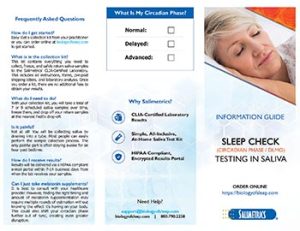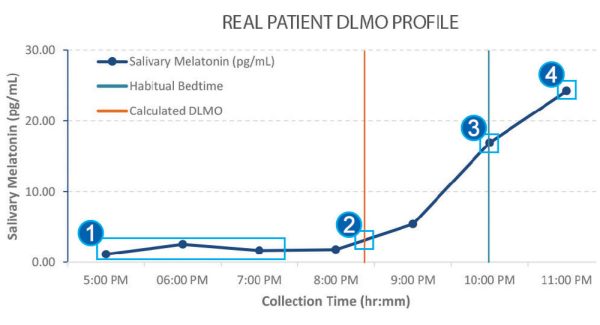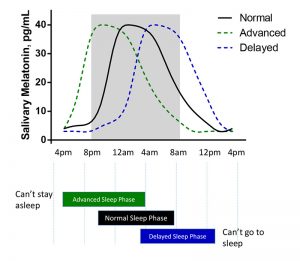Frequently Asked Questions?
How do I get started?
Simply order a collection kit from your sleep healthcare provider, or you can order online.
What is in the collection kit?
The kit contains everything you need to collect, freeze, and safely return saliva samples to the Salimetrics’ CLIA-Certified Laboratory. This includes all instructions, forms, pre-paid shipping labels, and laboratory analysis. Once you order a kit, there are no additional fees to obtain your results.
What do I need to do?
With your collection kit, you will take a total of 7 or 9 scheduled saliva samples over time, freeze them, and drop off your return samples to the nearest FedEx drop-off.
Is it painful?
Not at all! You will be collecting saliva by drooling into a tube. Most people can easily perform the sample collection process. The only painful part is often staying awake for an hour past your normal bedtime.
How do I receive results?
Results will be delivered via a HIPAA compliant e-mail portal within 7-14 business days from when the lab receives your samples.
Can I just take melatonin supplements?
It is best to consult with your healthcare provider. However, finding the right timing and amount of melatonin supplementation may require multiple rounds of estimation without knowing the effect it’s having on your body. This could also shift your circadian phase further out of sync, creating even greater disruption.
 Contact: Salimetrics (USA)
Contact: Salimetrics (USA)


